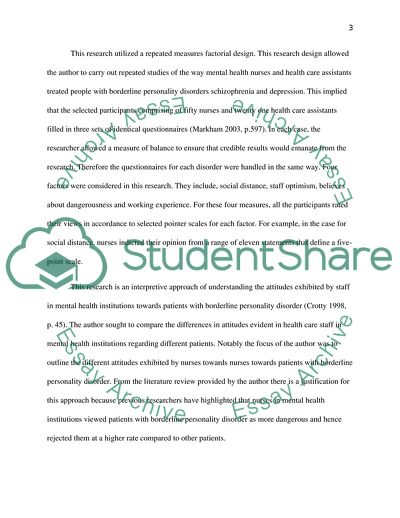Cite this document
(Borderline Personality Disorder: Social Rejection and Dangerousness Research Paper Example | Topics and Well Written Essays - 2500 words, n.d.)
Borderline Personality Disorder: Social Rejection and Dangerousness Research Paper Example | Topics and Well Written Essays - 2500 words. https://studentshare.org/health-sciences-medicine/1817313-rogers-and-dunne-personality-disorder-and-inpatient-experience-and-also-dominic-markhams-attitude-towards-patients-with-a-diagnosis-of-borderline-personality-disorder-social-rejection-and-dangerousness
Borderline Personality Disorder: Social Rejection and Dangerousness Research Paper Example | Topics and Well Written Essays - 2500 words. https://studentshare.org/health-sciences-medicine/1817313-rogers-and-dunne-personality-disorder-and-inpatient-experience-and-also-dominic-markhams-attitude-towards-patients-with-a-diagnosis-of-borderline-personality-disorder-social-rejection-and-dangerousness
(Borderline Personality Disorder: Social Rejection and Dangerousness Research Paper Example | Topics and Well Written Essays - 2500 Words)
Borderline Personality Disorder: Social Rejection and Dangerousness Research Paper Example | Topics and Well Written Essays - 2500 Words. https://studentshare.org/health-sciences-medicine/1817313-rogers-and-dunne-personality-disorder-and-inpatient-experience-and-also-dominic-markhams-attitude-towards-patients-with-a-diagnosis-of-borderline-personality-disorder-social-rejection-and-dangerousness.
Borderline Personality Disorder: Social Rejection and Dangerousness Research Paper Example | Topics and Well Written Essays - 2500 Words. https://studentshare.org/health-sciences-medicine/1817313-rogers-and-dunne-personality-disorder-and-inpatient-experience-and-also-dominic-markhams-attitude-towards-patients-with-a-diagnosis-of-borderline-personality-disorder-social-rejection-and-dangerousness.
“Borderline Personality Disorder: Social Rejection and Dangerousness Research Paper Example | Topics and Well Written Essays - 2500 Words”. https://studentshare.org/health-sciences-medicine/1817313-rogers-and-dunne-personality-disorder-and-inpatient-experience-and-also-dominic-markhams-attitude-towards-patients-with-a-diagnosis-of-borderline-personality-disorder-social-rejection-and-dangerousness.


